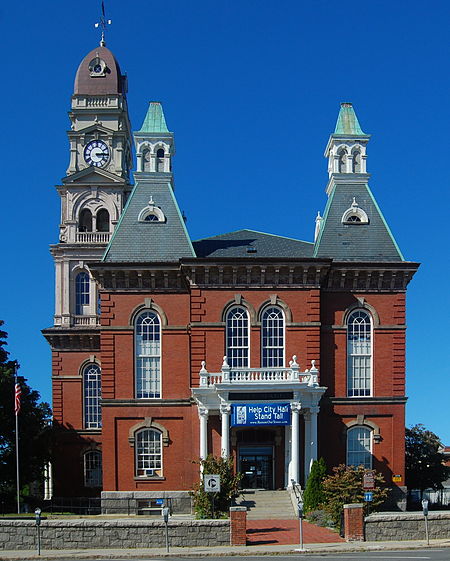Gloucester City Hall

Gloucester City Hall is located at 9 Dale Avenue in Gloucester, Massachusetts. It was built in 1870 and dedicated the following year, and has served as the main location for the city's offices since then. Built to a design by Bryant and Rogers, it is a two-story Second Empire brick building. Each of the rectangular building's four corners is topped by its own pyramidal roof structure, above which is a small rectangular cupola with its own roof. Centered on the front elevation is a clock tower that is brick in its lower levels, and decorated wood above, ending in a copper dome.The building was listed on the National Register of Historic Places in 1973, and included in the Central Gloucester Historic District in 1982.
Excerpt from the Wikipedia article Gloucester City Hall (License: CC BY-SA 3.0, Authors, Images).Gloucester City Hall
Dale Avenue, Gloucester
Geographical coordinates (GPS) Address Nearby Places Show on map
Geographical coordinates (GPS)
| Latitude | Longitude |
|---|---|
| N 42.613888888889 ° | E -70.663055555556 ° |
Address
Dale Avenue 9
01930 Gloucester
Massachusetts, United States
Open on Google Maps









